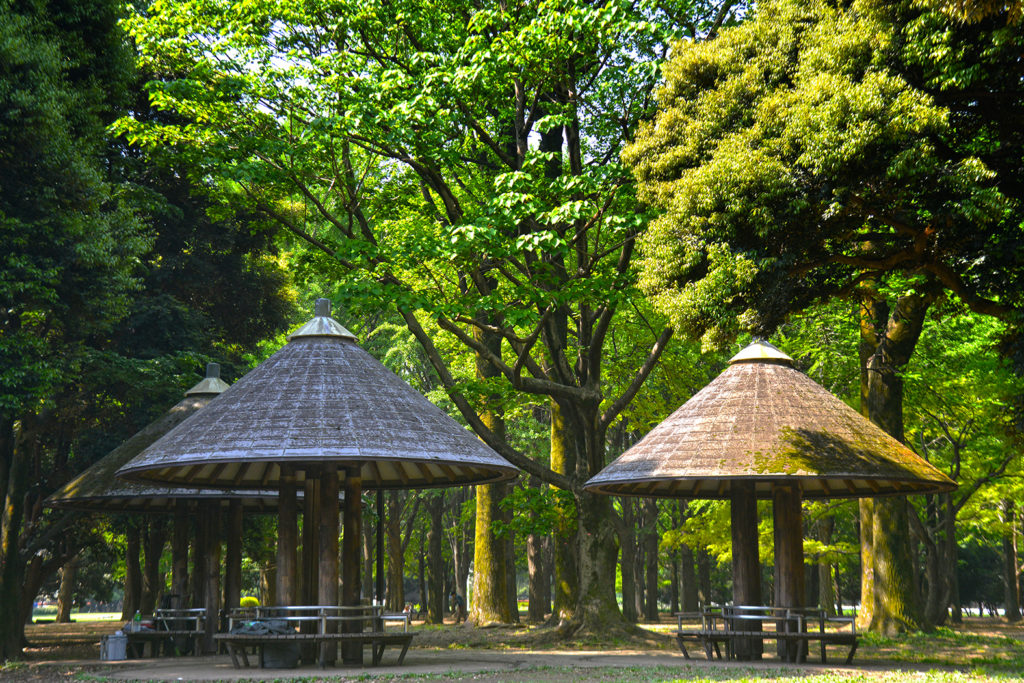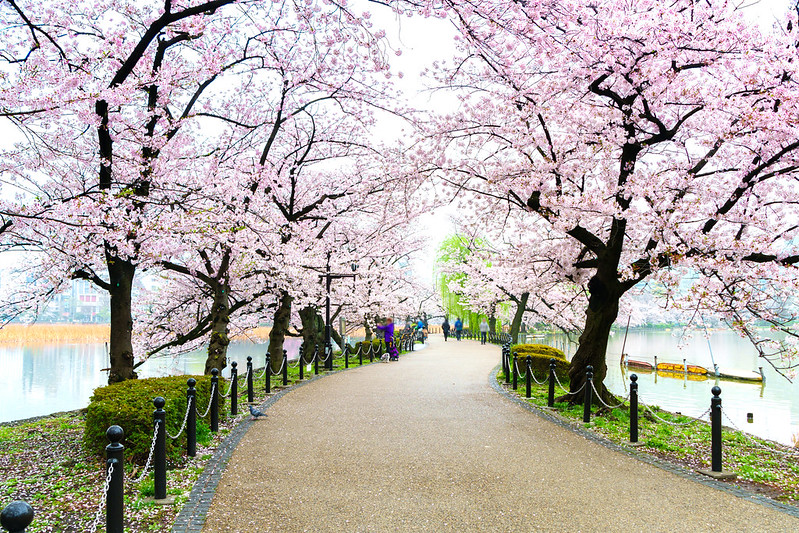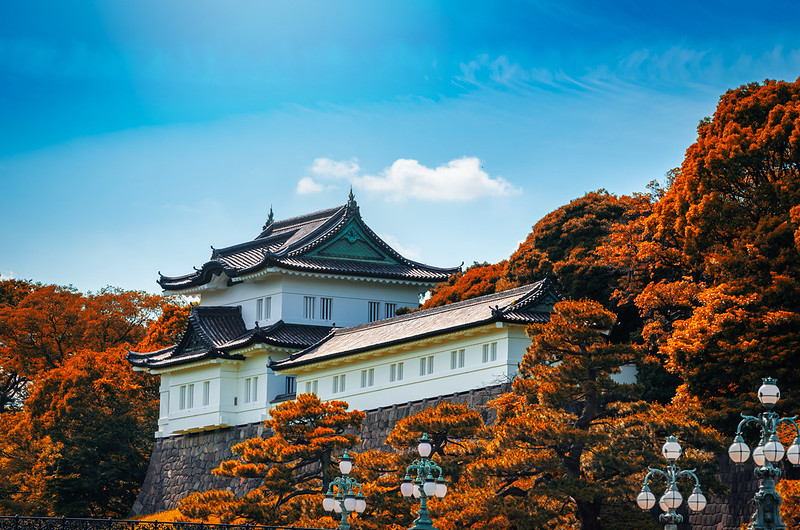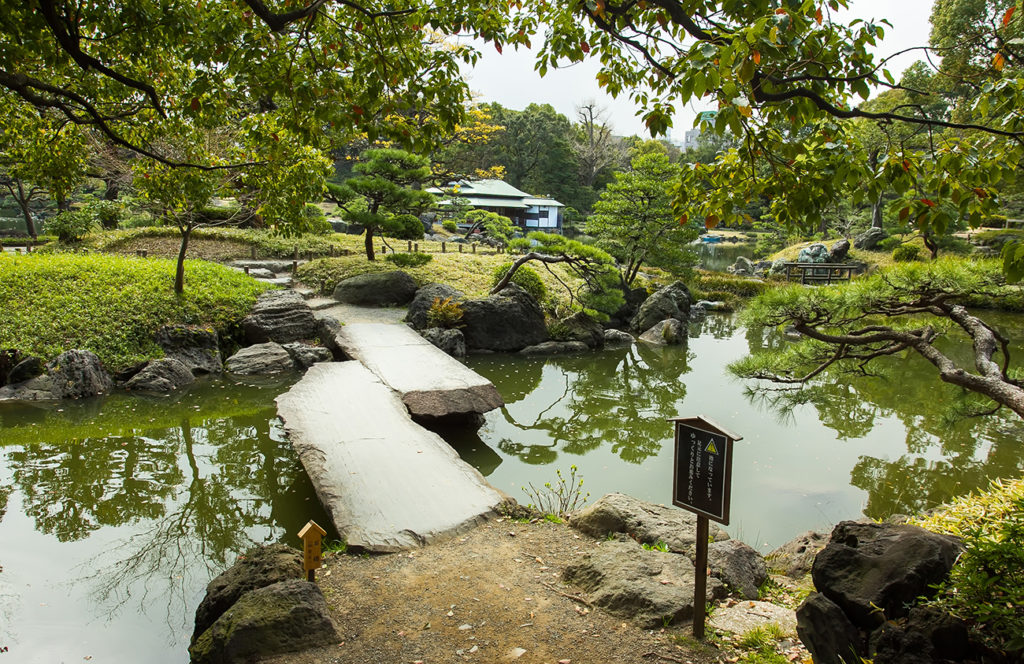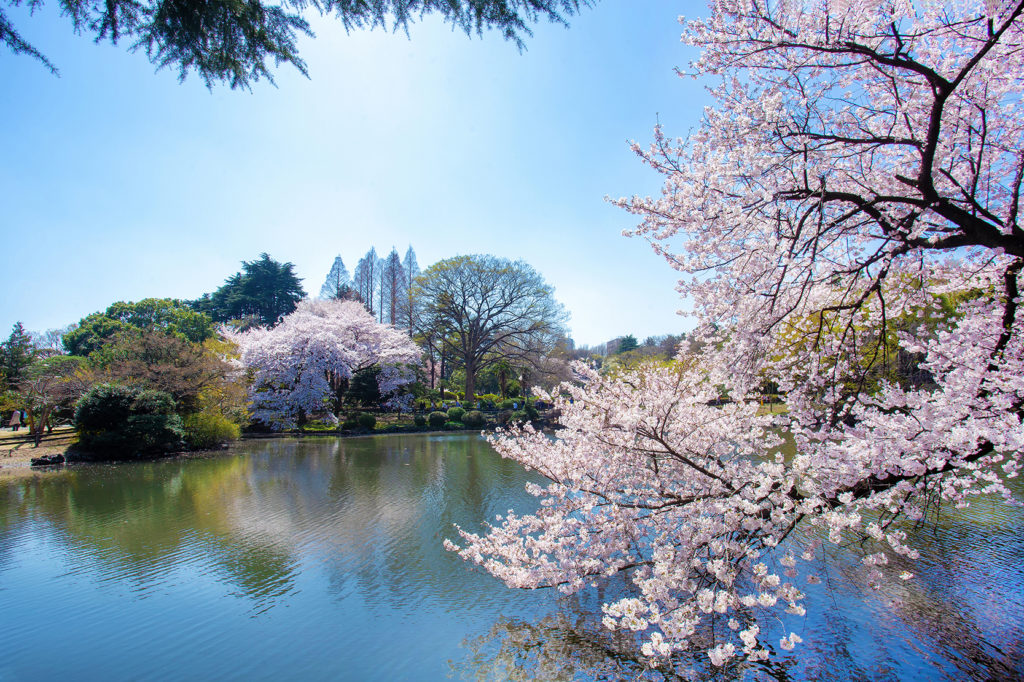
Parks and Gardens to Explore in Japan!
Tokyo may not be that famous as a city with lots of greenery, but it has a number of noteworthy gardens and parks, that offers a refreshing break for locals and tourists.
Shinjuku Gyoen (新宿御苑)
Covering about 58 hectares of land area, Shinjuku Gyoen is a spacious metro park that features wide lawns, ponds and trees. The Shinjuku Gyoen is a unique blend of three unique garden styles namely English Landscape, French Formal and Japanese Traditional. The garden is a popular hanami or cherry blossom viewing site, and Tokyo crowds flock in the park during the months of March and April.
Yoyogi Koen (代々木公園)
 Also known as one of Tokyo’s biggest parks, Yoyogi Park boasts nice lawns, ponds and lush forested areas. Although the area has less cherry blossom trees compared to other parks in the city, Yoyogi Koen is famous for the ginko tree forest, which transforms intensely golden during autumn. The park also features a fenced area where dogs are allowed to be off their leash.
Also known as one of Tokyo’s biggest parks, Yoyogi Park boasts nice lawns, ponds and lush forested areas. Although the area has less cherry blossom trees compared to other parks in the city, Yoyogi Koen is famous for the ginko tree forest, which transforms intensely golden during autumn. The park also features a fenced area where dogs are allowed to be off their leash.
Ueno Park (上野公園)
Orignally part of the Kaneji Temple, the Ueno Park is a public park which features a statue of Saigo Takamori and his dog. Takamori is known as one of the most influential Japanese samurai in history. The Ueno Park was built through a land grant by Emperor Taisho in Tokyo. At the southern end of the park lies the Shinobazu Pond, which serves as a reminder of Kaneiji’s former grandeur.
Koishikawa Botanical Garden (小石川植物園)
Operated by the University of Tokyo, the Koishikawa Botanical Garden showcases thousands of flora species and magnificent Japanese landscape gardens. The garden’s collections include 1,400 hardy wood species, 4,000 plant species, 1,100 tropical species and 1,500 herbaceous species. Some of their most popular collections include bonsai trees, alpine plants, cherries, maples, camellias and Japanese primroses.
Koishikawa Korakuen (小石川後楽園)
 Koishikawa Korakuen is known as one of Tokyo’s oldest and best kept parks. It was also appointed by the national government as a place of beauty and a historic site. Koishikawa Korakuen aims to reproduce popular landscapes from Japan and China in miniature forms using plants, stones, ponds and man made hills. The park is at a walking distance from the Korakuen or Iidabashi Stations.
Koishikawa Korakuen is known as one of Tokyo’s oldest and best kept parks. It was also appointed by the national government as a place of beauty and a historic site. Koishikawa Korakuen aims to reproduce popular landscapes from Japan and China in miniature forms using plants, stones, ponds and man made hills. The park is at a walking distance from the Korakuen or Iidabashi Stations.
Imperial Palace East Gardens (皇居東御苑)
The Imperial Palace Gardens was once part of the inner palace area of the Edo Castle. None of the castle’s main buildings stands today, but the entrance gates, guardhouses, moats and walls.
The Edo Castle was home to the Tokugawa shogun who reigned over Japan from 1603 to 1867. For two decades, the Emperor resided in the Edo castle before moving to the Imperial Palace.
Rikugien Garden (六義園)
The Rikugien features some of Tokyo’s most beautiful and majestic Japanese landscape gardens. The word “Rikugien” comes from the six elements of the waka poetry. Rikugien Park is made up of a small pond, a hill and surrounding trees. It takes about an hour or two for guests to walk around the entire park.
Kiyosumi Teien (清澄庭園)
 Built during the Meiji Period, the Kiyosumi Teien is a perfect example of a traditional Japanese stroll garden. The Kiyosumi Teien is famous for the “isowatari”, stepping stones that are set in water which allows for a pathway of picturesque scenes filled with fishes and turtles. Water worn stones and boulders were collected from all over Japan to give this garden its unique character. The Iwasaki family collected hundreds of beautiful stones from across the country and placed them on the garden. The Kiyosumi Teien can be literally perceived as a stone garden.
Built during the Meiji Period, the Kiyosumi Teien is a perfect example of a traditional Japanese stroll garden. The Kiyosumi Teien is famous for the “isowatari”, stepping stones that are set in water which allows for a pathway of picturesque scenes filled with fishes and turtles. Water worn stones and boulders were collected from all over Japan to give this garden its unique character. The Iwasaki family collected hundreds of beautiful stones from across the country and placed them on the garden. The Kiyosumi Teien can be literally perceived as a stone garden.
